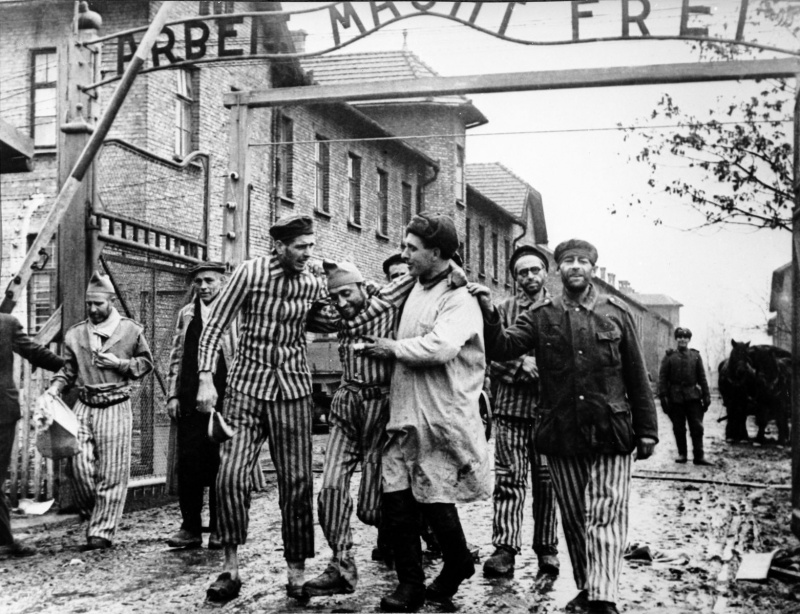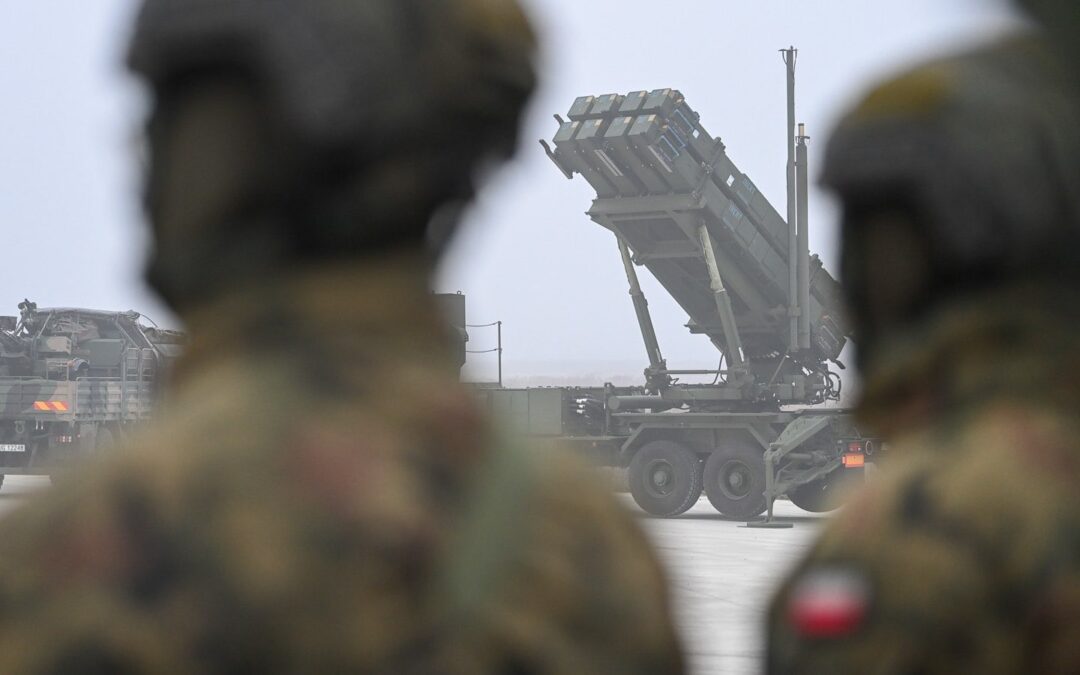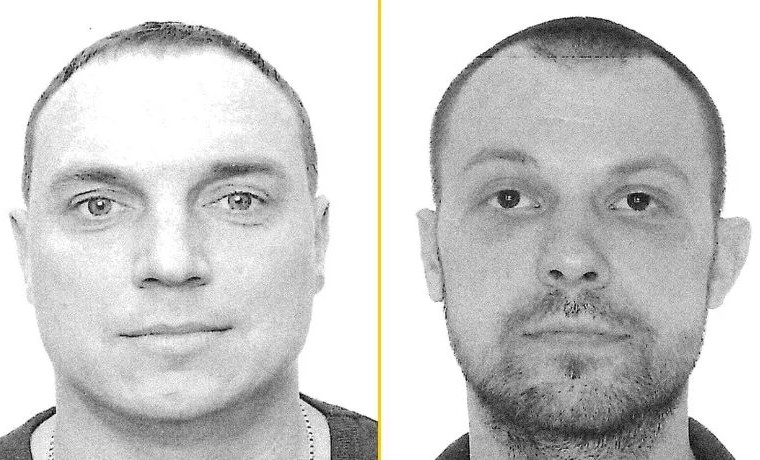By Norman Davies
Thanks to the annual commemoration at the former Nazi German camp at Auschwitz, and also to Vladimir Putin’s recent foray into Polish history, “liberation” is once more in the news. Thoughtful people need to reflect on what actually happened in Poland, both in 1939 and in 1944-45, and to draw their own conclusions.
In September 1939, Germany’s invasion of Poland was followed by a Soviet invasion, as the two powers partitioned the country under a secret clause of the Nazi-Soviet Pact. The Soviets described themselves as “liberators” of Belarusians and Ukrainians inhabiting the eastern regions of the destroyed Polish state. Perhaps all invaders and occupiers describe themselves in these terms. Two years later, on invading the Soviet Union, the Germans would claim to be “liberating” it from Bolshevism. So “liberation” can be a doubtful quantity.
Five years after the events of 1939, the Soviet armies returned to Poland, at the end of their titanic and victorious struggle with Hitler’s Wehrmacht. But the same question again arises: was their advance an act of liberation, or not? President Putin would say “Yes”. Most Poles would say “No”. Many observers, including myself, would say “Yes and No”.
During the 20th century, Russian or Soviet armies invaded Poland four times over. In many ways, the second Soviet occupation of 1944-45 resembled the first Soviet occupation of 1939-41, the Red Army’s invasion of 1920 during the Polish-Soviet War, and the Tsarist Russian invasion of Austrian-ruled Galicia 25 years before that, when the Cossacks rode up to the outskirts of Kraków.
On all these occasions, the invaders’ propaganda claimed loudly that the local people were being liberated. Sir Bernard Pares was a British liaison officer with the Russian army in Galicia in 1915. “We are liberating the Slavs,” he told his bosses in London, perhaps unaware of the gross misconduct of the incoming “Slav brothers”, including forced conversions, arrests and mass deportations.
At the end of the Second World War, Stalin’s forces took complete political control of all Poland, whilst annexing only the eastern borderlands, or Kresy. Once again, beyond the River Bug, the claim was that the Slav brethren were being liberated. The local population was not asked for its opinion, but was unlikely to have agreed.
In the preceding years, that population had changed drastically. As a result of frontline battles and anti-partisan warfare, up to a quarter of the population of Belarus and western Ukraine had perished. During the German occupation in 1941-44, the Jews were killed en masse and virtually eliminated. And in the final phase, the campaign of ethnic cleansing by a branch of the Ukrainian nationalist movement was murdering tens of thousands of Poles.
When talking of attitudes to the post-war Soviet occupation of the Kresy, therefore, one is referring in large measure to the attitudes of the remaining Belarusian and Ukrainian peasants. Here the picture is perfectly clear. Most of those peasants belonged to the Greek Catholic (or Uniate) Church, a denomination which had repeatedly been viciously persecuted by successive waves of Russians. They knew from experience that the arrival of the Soviet army would be accompanied by all sorts of chicanery, by the disappearance of their clergy, and by the imposition of Russian Orthodoxy. This was no recipe for “liberation”.
The native languages of those same peasants fell into the category of ruski – or “Ruthenian”, a branch of the East Slav linguistic family. Since ruski is also the name of the Russian language, most outsiders are unaware both of the complexity and of the long struggle waged by Belarusians and Ukrainians to have their forms of speech accepted as separate languages.
In Tsarist times, Russian officials, who had rebranded Belarus as “White Russia” and Ukraine as “Little Russia”, insisted that the natives of those countries were simply speaking dialects of Russian; and they punished anyone who thought otherwise severely. (Their views may best be likened to German nationalists, who once held that “Dutch” was no more than a dialect of “Deutsch”.)
In Soviet times, linguistic policy had shifted, and under Stalin the Belarusian and Ukrainian languages were initially permitted. Yet in the late 1930s, the newly educated intelligentsias of the western Soviet republics were decimated in the purges and terror; and it was well known in neighbouring Poland that over the border “you are completely free to speak Belarusian or Ukrainian, so long as you don’t mind being a corpse”.
Above all, the peasants of pre-war eastern Poland were fiercely attached to the land, which they owned and tilled. Until the 1860s, three or four generations earlier, they had all been serfs tied to their lords’ estates, and unlike their compatriots across the frontier in the Soviet Union, had never been collectivised after their emancipation.
Despite the hardships of subsistence farming, they valued their freedom above all else. They were well informed of the fact that Stalin’s collectivisation only a decade earlier had caused untold misery, widespread famine and the death of millions. So the very last thing they wanted was the collectivisation which the Soviet army was bringing in its wake. They had been far from content under pre-war Polish rule, but had every reason to expect that Soviet rule would be much worse. Better than anyone else, they understood in 1945 that the Soviet army was driving out the hated Nazis yet at the same time was building another type of totalitarian dictatorship which no one wanted.
Which leads to the historical context of the liberation of Auschwitz.
There can be no doubt of the need to celebrate the freeing of the surviving victims of Auschwitz and to preserve the memory of the atrocities heaped on Europe in general, and on Jews in particular, by the German Nazis and their accomplices. The slogan of “Never Again” is absolutely right and proper.
Nonetheless, to do justice to the accuracy of historical memory, one needs to dig a bit deeper and to discover what else was going on in Poland in January 1945. For several post-war decades, the subject was suppressed by the elaborate censorship of the Soviet Bloc, and it is only relatively recently that people have been able to write and talk about it openly.
Auschwitz, one should remember, was chosen by the Soviets as the showpiece of what they called the “crimes of fascism”. As soldiers of the 1st Ukrainian Front approached the camp, film cameras were brought in so that the world could be shown the frightful pictures of the emaciated victims, the mountains of shoes, suitcases and human hair, and the gas chambers. Moscow announced that four million people had been put to death on the site – a figure which was repeated endlessly until 1989, when it was revised by the director of the camp museum and reduced to “circa one million”.
So one needs to look carefully at the details and the terminology. Despite the loose language often used, and despite the colossal death toll, Auschwitz cannot simply be described as a “death camp”, It should be categorised as a sort of hybrid, made up of a complex of three camps, each with a different function.
KL Auschwitz I, which the prisoners entered through the notorious gateway declaring Arbeit macht frei, was built in 1940 as an internment camp for Polish political prisoners.
Auschwitz II Birkenau, built in 1941, was larger and combined a high-intensity concentration camp with an external complex of gas chambers and cremation furnaces. The camp contained facilities to let the inmates eat, sleep, and work, but the greatest number who perished at Auschwitz never even entered the camp, being sent directly on arrival from the railway ramp to the gas chambers. Around 900,000 Jews met their fate in this manner.
KL Auschwitz III, built in 1942, was a dedicated slave-labour camp servicing the nearby artificial fuel factory, whose workers were not supposed to be worked to death.
Each of the three camps at Auschwitz differed from the true Vernichtungslager, or “extermination camps”, at Treblinka, Bełżec and Sobibór, which made little or no provision for work and were designed exclusively for killing the largest number of victims as quickly and as smoothly as possible.
And then there was KL Majdanek.
Built, like KL Auschwitz II Birkenau, in 1941, Majdanek was designed for the same purposes, and under Nazi management caused another huge death toll. Unlike Auschwitz, however, which was immediately turned into a museum after the war, it fits into another category of concentration camps, like Buchenwald in eastern Germany, which were put to use under Soviet management as centres for repressing new cohorts of prisoners.
If one puts the histories of Auschwitz and Majdanek together, therefore, the true face of the so-called liberation is revealed. At the very same time in January 1945 when the surviving inmates of Auschwitz were being released in full view of the cameras, the NKVD, who were now running Majdanek, were secretly filling it with another set of inmates and carefully avoiding all publicity.
This time, the ex-Nazi camp housed thousands of members of Poland’s wartime resistance movement, the Home Army (AK), who were allies of the Western powers and had fought the German occupiers hard. Many of these resistance fighters were Britain’s allies, inspired by democratic ideals and flown into Poland in 1942-43 by Britain’s Special Operations Executive (SOE). But they were regarded by Stalin as spies, turncoats and traitors.
After Britain recognised the post-war communist regime in line with the Yalta Agreement, the British government lost all interest in their fate. In the minds of most Westerners, the lessons of the so-called liberation were never learned.
Main image credit: Wikimedia Commons (under public domain)





















